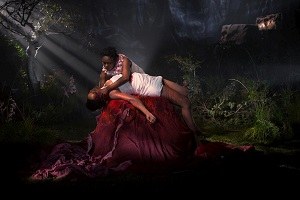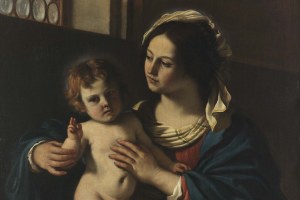South Africa – Exhibition “Now and then: Guercino/Kudzanai Chiurai”
The exhibition “Now and then: Guercino/Kudzanai Chiurai” was opened on 3 July last in Cape Town, at the Zeitz MOCAA, the biggest museum of contemporary African art, where it is set until the 25th of September.
An unusual yet extremely fascinating exhibition, which compares two different worlds, continents, historical moments, cultural approaches, two different artists: Giovanni Francesco Barbieri, known as “il Guercino”, born in Cento in 1591 and passed away in Bologna in 1666, and Kudzanai Chiurai, born in Harare in 1981, internationally recognized as one of the most interesting in Africa and not only there.
Il Guercino is commonly recognized as one of the most representative artists of the Baroque period. Many of the masterpieces he painted are now hosted in the most prestigious and renowned museums in the world, but a great majority of his paintings are still hosted in his birthplace, Cento, where he had lived for the most significant part of his life, a “nice and small town” that charmed Goethe during the Grand Tour he made between 1786 and 1788.
And it is just from the Civic Art Gallery of Cento the picture on display comes from: the “Madonna with blessing Child”, oil on canvas painted in 1629 for the choir of the Church of SS. Trinità dei Cappuccini in Cento, a work considered very important as testifies Guercino’s artistic transition from naturalism to the aesthetic patterns of classic art.
The painting depicts a young Mary as a loving mother gently attending the Child in the gesture of the blessing. Il Guercino lends a strong intimacy and an affectionate complicity to the scene, the light and the colours make the figures stand out against the background, and let us enter into “the stage of sentiments”.
Also Kudzanai Chiurai’s works on display depict a “madonna” and tell about feeling.
They are “Untitled (Dress from Moyo)”, a work made of sheep skin, dyed bandage, wood, blood-red beads and bronzed horns, created together with the South African artist Marianne Fassler, and “Moyo”, a film made in 2013, the third in a series realized by Chiurai.
 Moyo – meaning air – tenderly articulates the moment in death when the air -the spirit- leaves the body. The woman in the film witnesses this moment and cries ‘Warazulwa ngenxa yami’ (you were ripped and torn for my sake) as she wipes the wounds of a lifeless figure.
Moyo – meaning air – tenderly articulates the moment in death when the air -the spirit- leaves the body. The woman in the film witnesses this moment and cries ‘Warazulwa ngenxa yami’ (you were ripped and torn for my sake) as she wipes the wounds of a lifeless figure.
Chiurai uses art as a form of activism, driven by having witnessed numerous public acts of violence in his country, and with his work he asks us to consider subjective mourning for these acts of violence.
The artist says the initial reference for the video was Michelangelo’s Pietà, with the figure of Jesus cradled in his mother’s arms after the Crucifixion. Chiurai’s work references Christ dying on the cross but referring to his sacrifice as an act of public violence and appraising the contemporary African notion of sacrifice.
A further evidence from Emilia-Romagna was also in the event programmed for the exhibit opening.
Alessandro Gigli, Italian composer and flutist living in Cape Town, has composed original music expressly for the Zietz Mocaa museum space and has invited Gianni Giangrasso, percussionist of the Regional Orchestra of Emilia-Romagna ORER to accompany the execution on vibraharp and special tuned metal bars created by South African artist Rodan Kane Hart.
The musical composition has been inspired by il Guercino’s painting and interprets the picture’s peculiar themes of sweetness, mystic elevation and great lightness approaching them to modern and more extreme sounds, nearer to Kudzanai Chiurai’s work.
It had been first performed by Alessandro Gigli himself on side-blown flutes and live electronics, Diana Leigh Neille on violin, Cara Coetzee on viola, Natasha Otero on cello, Andre Geldenhuys on guitar and effects, and Gianni Giangrasso on percussion and vibraharp.
This important cultural event has been organized by the Consulate of Italy in Cape Town to promote Italian and Emilia-Romagna cultural heritage, and also, in particular, the territory of Cento and its Civic Art Gallery, a building seriously damaged by the earthquake in 2012.
The event has been realized thanks to the cooperation of the Ministry for Foreign Affairs and International Cooperation, the office for Cultural activities abroad of Emilia-Romagna Region, the office for Cultural services of the Municipality of Cento, and the International Studies Centre Il Guercino.
Italian Consul in Cape Town Alfonso Tagliaferri, Deputy Major of Cento Simone Maccaferri, President of the International Studies Centre Il Guercino professor Salvatore Amelio, Premier of Western Cape Government Helen Zille attended the opening.
Zeitz MOCAA - Museum of Contemporary Art Africa in Cape Town
video Cento - Il Guercino's birthplace
.

